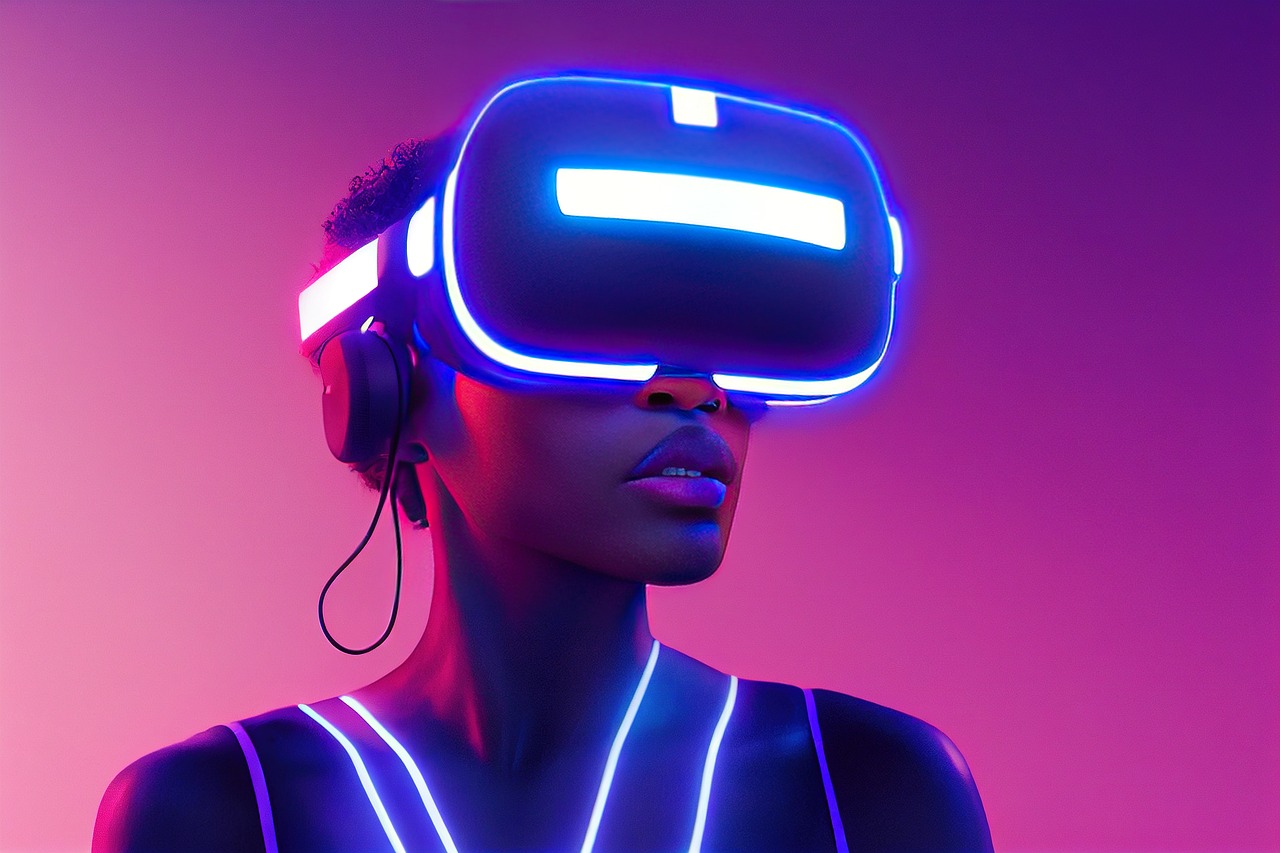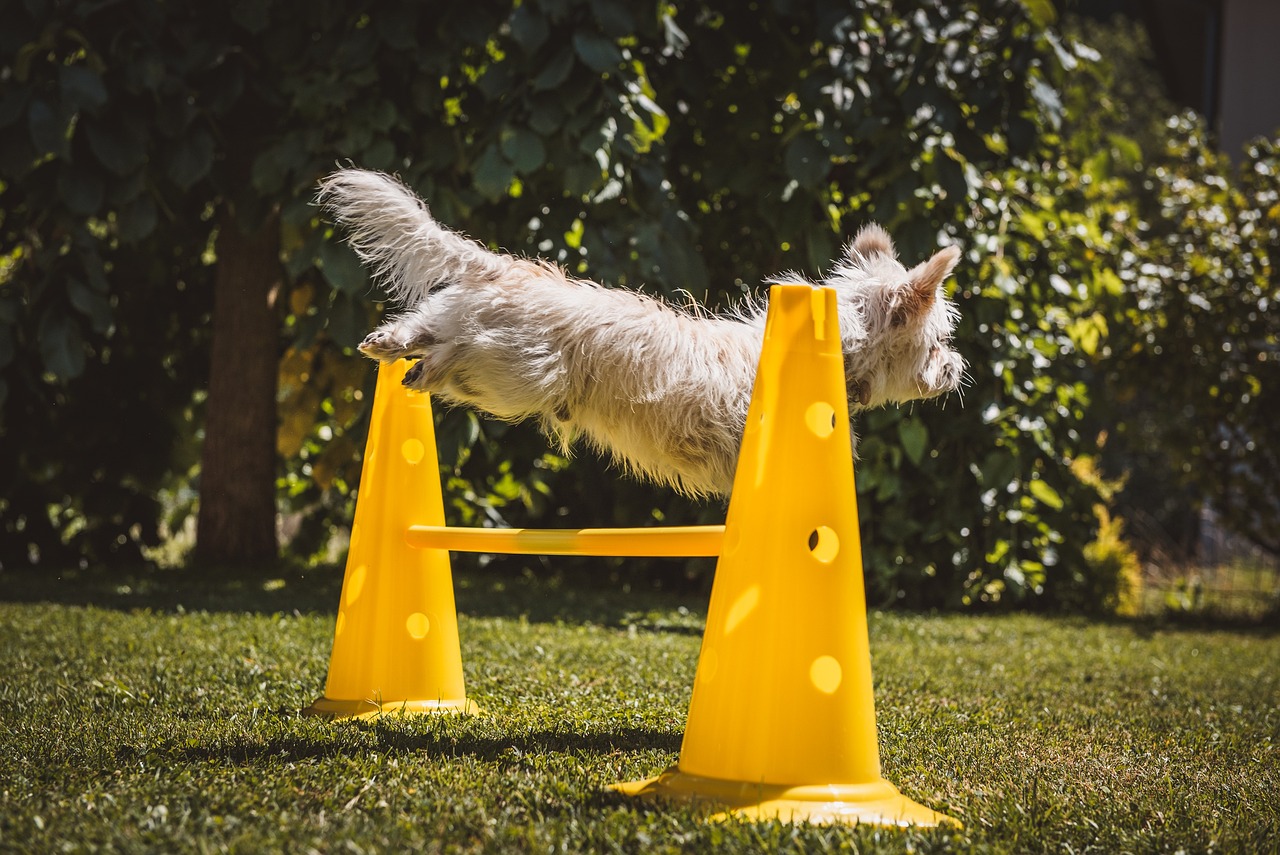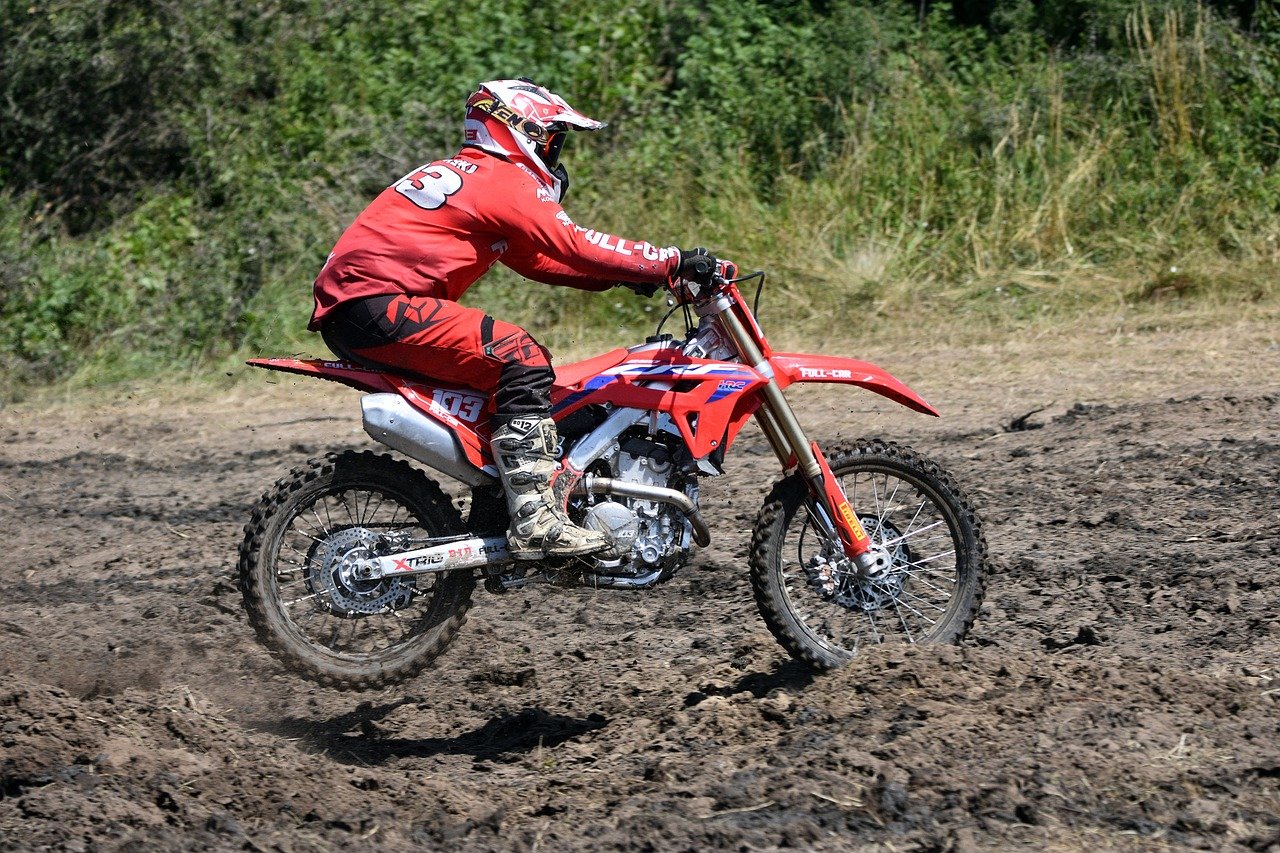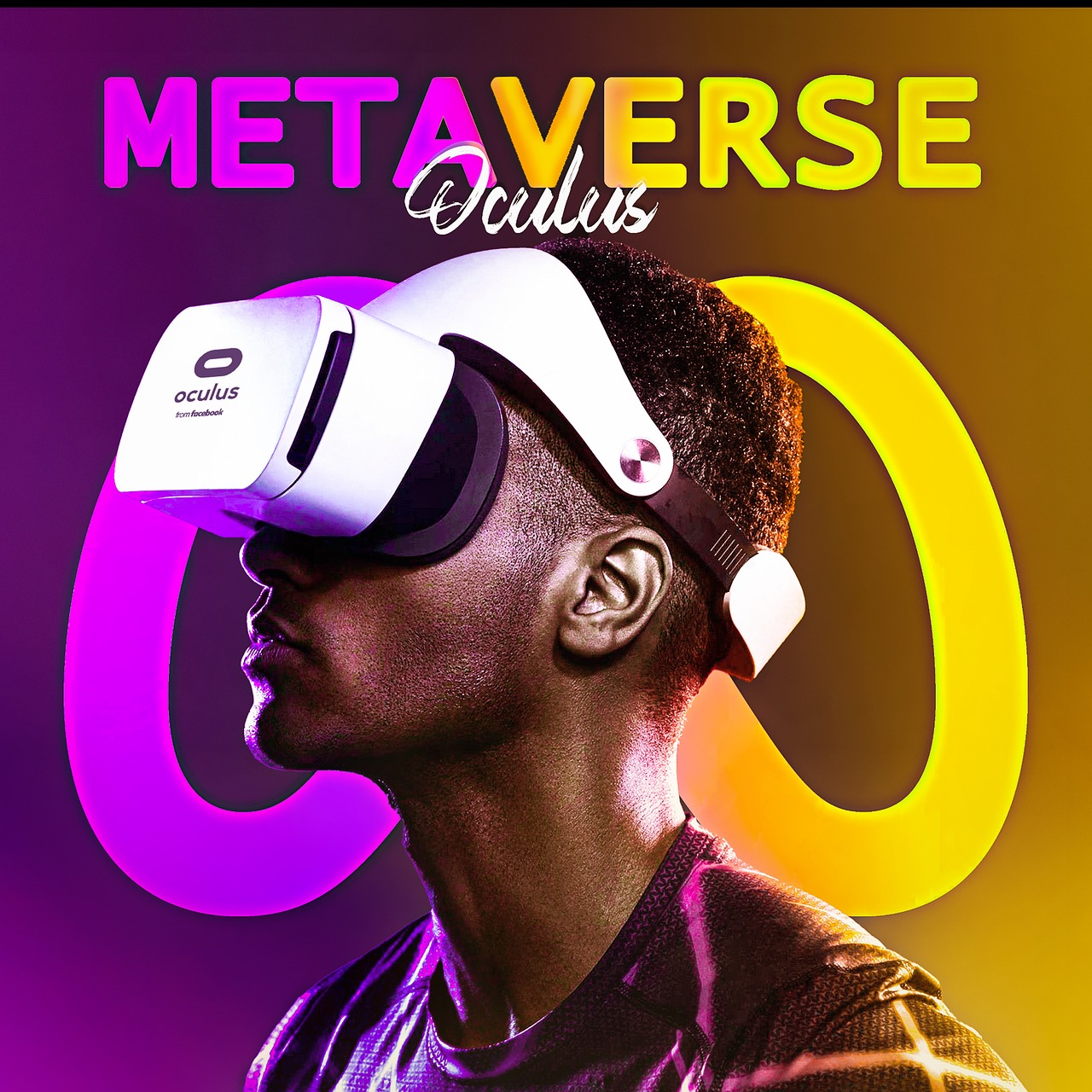Using VR for Advanced Tactical Maneuvering Training
In recent years, the landscape of training for military and law enforcement personnel has undergone a remarkable transformation, primarily due to the integration of Virtual Reality (VR). Imagine stepping into a world where you can practice critical tactical maneuvers without the risks associated with real-life scenarios. This is not just a fantasy; it's the reality that VR brings to advanced tactical maneuvering training. By immersing trainees in lifelike environments, VR offers an unparalleled opportunity to develop skills, enhance decision-making, and prepare for the unpredictable nature of real-world engagements.
The benefits of using VR in tactical training extend far beyond mere simulation. It creates a dynamic learning environment that promotes engagement and retention. Trainees are not passively observing; they are actively participating in scenarios that challenge their situational awareness and critical thinking skills. The ability to rehearse various tactical situations—from urban combat to hostage rescue operations—fosters a deeper understanding of the complexities involved in each scenario. With the click of a button, instructors can create multiple training scenarios, allowing for a diverse range of experiences that keep trainees on their toes.
Moreover, VR facilitates a sense of realism that traditional training methods often lack. Picture this: you’re in a virtual combat zone, and the sounds of gunfire and explosions echo around you. Your heart races as you make split-second decisions, just like you would in real life. This level of immersion not only heightens the training experience but also prepares individuals for the psychological pressures they will face in actual combat situations. The power of VR lies in its ability to replicate these high-stress environments, allowing trainees to practice their responses in a safe yet realistic setting.
As we delve deeper into the applications of VR in tactical training, we will explore how it revolutionizes military and law enforcement training programs. From customizable training environments to the integration of VR with live exercises, the potential for enhanced preparedness is immense. In the following sections, we will uncover the specific ways VR is being utilized to create effective and engaging training solutions for those tasked with protecting our communities and our nations.
Virtual reality offers immersive experiences that enhance learning and retention. This section discusses how VR improves situational awareness, decision-making skills, and engagement during tactical training exercises.
The military has embraced VR technology for training soldiers in various scenarios. This section examines specific applications of VR in combat simulations, strategy development, and teamwork exercises.
VR allows for the creation of highly realistic combat environments. This subheading delves into how these simulations prepare soldiers for the unpredictability of real-world engagements.
Instructors can modify VR scenarios to address specific training needs. This section highlights the importance of adaptability in training programs for enhanced preparedness.
Combining VR with live exercises enhances overall training effectiveness. This subheading discusses the complementary nature of VR and traditional training methods.
Effective decision-making is crucial in tactical situations. This section explores how VR scenarios challenge trainees to think critically and make quick, informed choices under pressure.
Law enforcement agencies are increasingly using VR for training officers. This section covers how VR helps in crisis de-escalation, suspect interaction, and evidence gathering.
VR training prepares officers for high-pressure encounters. This subheading discusses the psychological benefits of practicing stressful scenarios in a controlled environment.
Engaging with the community is essential for law enforcement. This section explores how VR can simulate community interactions to improve officer-community relations.
- What is Virtual Reality (VR) training? VR training is an immersive experience that simulates real-world scenarios, allowing users to practice skills in a safe environment.
- How does VR enhance decision-making skills? VR scenarios challenge trainees to think critically and make quick decisions under pressure, mimicking real-life situations.
- Can VR be integrated with traditional training methods? Yes, combining VR with live exercises enhances overall training effectiveness and provides a comprehensive learning experience.
- What are the psychological benefits of VR training? Practicing in a controlled environment helps reduce anxiety and prepares individuals for high-stress encounters.

Benefits of VR in Tactical Training
This article explores the integration of virtual reality in tactical maneuvering training, highlighting its benefits, applications, and potential to revolutionize military and law enforcement training programs.
Imagine stepping into a world where you can face life-or-death situations without any real-world consequences. Virtual reality (VR) makes this possible, transforming the landscape of tactical training. One of the most significant benefits of VR is its ability to create immersive experiences that enhance learning and retention. When trainees engage in a lifelike simulation, they are not just passively observing; they are actively participating, which leads to a deeper understanding of complex scenarios.
One of the key aspects of tactical training is situational awareness. VR environments can replicate high-stakes situations where every decision counts. Trainees learn to assess their surroundings, recognize potential threats, and make split-second decisions. This heightened sense of awareness is crucial for both military personnel and law enforcement officers, who often operate in unpredictable environments. In fact, studies have shown that individuals who train in VR demonstrate significantly improved situational awareness compared to those who undergo traditional training methods.
Another advantage of VR is its impact on decision-making skills. In tactical scenarios, the ability to think critically and make informed choices under pressure can mean the difference between success and failure. VR challenges trainees with realistic dilemmas, forcing them to evaluate options and consider consequences in real-time. This practice not only builds confidence but also prepares them for the chaos of actual engagements. Imagine a soldier in a VR simulation needing to decide whether to take cover or advance on an enemy position. The stakes feel real, and this pressure can lead to more effective decision-making in real-life situations.
Engagement is another area where VR shines. Traditional training methods can sometimes lead to boredom, but VR captivates trainees with its interactive nature. The excitement of navigating a virtual battlefield or managing a crisis situation keeps participants focused and motivated. This engagement is particularly beneficial for younger generations, who are accustomed to digital environments. By integrating VR into training programs, organizations can foster a more enthusiastic and committed learning atmosphere.
Moreover, VR allows for customizable training environments. Instructors can modify scenarios to address specific training needs, tailoring experiences to focus on particular skills or challenges. For instance, if a team needs to improve its communication during a crisis, the instructor can create a scenario that emphasizes teamwork and coordination. This adaptability ensures that trainees are not just going through the motions but are genuinely preparing for the challenges they will face in the field.
Finally, the integration of VR with traditional live training methods enhances overall effectiveness. Think of it as the perfect blend of theory and practice. While live exercises provide invaluable hands-on experience, VR can be used to simulate situations that are difficult or dangerous to recreate in real life. This complementary approach allows trainees to build foundational skills in a safe environment before applying them in the field. In essence, VR serves as a bridge, connecting the classroom to the real world.
| Benefit | Description |
|---|---|
| Immersive Experiences | Enhances learning and retention through active participation. |
| Situational Awareness | Improves the ability to assess surroundings and recognize threats. |
| Decision-Making Skills | Challenges trainees to think critically under pressure. |
| Engagement | Captivates trainees with interactive scenarios. |
| Customizable Environments | Allows for tailored training experiences based on specific needs. |
| Integration with Live Training | Enhances overall training effectiveness by combining methods. |
Law enforcement agencies are increasingly using VR for training officers. This section covers how VR helps in crisis de-escalation, suspect interaction, and evidence gathering.
VR training prepares officers for high-pressure encounters. This subheading discusses the psychological benefits of practicing stressful scenarios in a controlled environment.
Engaging with the community is essential for law enforcement. This section explores how VR can simulate community interactions to improve officer-community relations.
- What is VR training? VR training uses virtual reality technology to create immersive training environments for various applications, including military and law enforcement.
- How does VR improve decision-making skills? VR scenarios challenge trainees to make quick, informed choices under pressure, enhancing their critical thinking abilities.
- Can VR training replace traditional methods? While VR training offers numerous benefits, it is most effective when integrated with traditional training methods for a comprehensive approach.
- Is VR training safe? Yes, VR training allows individuals to experience high-stress scenarios without real-world consequences, making it a safe training option.

Applications in Military Training
The military has truly embraced the power of virtual reality (VR)
One of the most significant advantages of VR in military training is its ability to simulate realistic combat scenarios. Soldiers can experience the chaos of battle without the inherent risks involved in live training exercises. These simulations can replicate various environments—from urban warfare to dense forests—allowing soldiers to adapt their tactics accordingly. The unpredictability of these scenarios prepares them for the real-world engagements they may face, giving them a crucial edge in actual combat situations. In a VR combat simulation, every detail is designed to mimic reality. Soldiers can engage in firefights, navigate complex terrains, and even respond to unexpected challenges, such as ambushes or civilian interactions. This level of realism is essential for developing the muscle memory and decision-making skills needed in high-pressure situations. The ability to practice repeatedly in a safe environment allows them to refine their techniques and build confidence, which is vital when they eventually face real threats. Another remarkable aspect of VR technology is the customizability it offers. Instructors can tailor training scenarios to meet the specific needs of their unit or mission. For example, if a particular team needs to focus on urban combat, the VR environment can be adjusted to simulate a cityscape, complete with buildings, vehicles, and even civilians. This adaptability ensures that soldiers are always prepared for the unique challenges they might encounter, enhancing their overall readiness. Moreover, VR training doesn't have to exist in a vacuum. It can be effectively integrated with traditional live training exercises. This hybrid approach allows soldiers to first practice in a virtual environment before applying what they've learned in real-world scenarios. For instance, a unit might first engage in a VR simulation of a tactical operation, followed by a live exercise that mirrors the same situation. This method reinforces learning and helps solidify the skills they've developed. Furthermore, using VR in conjunction with live training offers a unique opportunity for after-action reviews. Instructors can record VR sessions and review them with the soldiers, highlighting areas for improvement and celebrating successes. This feedback loop is invaluable for continuous learning and skill enhancement. In conclusion, the applications of VR in military training are not just innovative; they are essential for preparing soldiers for the complexities of modern warfare. The immersive experiences, realistic simulations, and adaptability of VR technology are revolutionizing how military personnel are trained, ultimately leading to more effective and prepared forces. In the realm of military training, the phrase "practice makes perfect" takes on an entirely new meaning when we introduce virtual reality (VR) into the mix. Imagine stepping into a fully immersive environment where every sound, sight, and sensation mimics the chaos of actual combat. This is not just a fantasy; it's the reality that VR provides. By simulating realistic combat scenarios, VR equips soldiers with the tools they need to navigate the unpredictability of real-world engagements. One of the most remarkable aspects of VR is its ability to create highly detailed environments that reflect various terrains and conditions. From the dense jungles of Southeast Asia to the urban landscapes of modern cities, VR can replicate these settings with stunning accuracy. This level of realism allows soldiers to practice maneuvers in environments they may encounter in the field, thereby enhancing their preparedness. The training becomes more than just a drill; it transforms into a lifelike experience where every decision can have significant consequences. Moreover, VR scenarios can be designed to include a variety of combat situations that challenge soldiers both physically and mentally. For instance, trainees may find themselves in a hostage rescue operation, where they must assess the situation, communicate with their team, and execute a plan under pressure. The immersive nature of VR means that they can feel the weight of their gear, hear the distant sounds of gunfire, and even experience the adrenaline rush that comes with high-stakes decision-making. This kind of training not only hones their tactical skills but also builds their emotional resilience. Another significant advantage of VR is its capacity for real-time feedback. In traditional training exercises, soldiers often have to wait for a debriefing session to understand their mistakes. However, VR can provide immediate analysis of their actions, allowing them to learn and adapt on the fly. For example, after completing a mission simulation, a soldier might receive insights into their decision-making process, highlighting areas for improvement. This instant feedback loop fosters a culture of continuous learning and growth. Furthermore, VR training can be tailored to meet the specific needs of different units or missions. Instructors can modify scenarios to focus on particular skills, whether it's marksmanship, communication, or tactical maneuvering. This adaptability ensures that each training session is relevant and effective, allowing soldiers to prepare for the unique challenges they may face in their operational roles. As a result, the training becomes a personalized experience, where individuals can develop their skills at their own pace while still benefiting from the immersive environment. In conclusion, the integration of VR into combat training is revolutionizing how military personnel prepare for real-world scenarios. By simulating realistic combat environments, providing real-time feedback, and allowing for customizable training experiences, VR is not just enhancing traditional methods but redefining them. Soldiers are no longer just participants in a drill; they are active players in a dynamic, engaging learning experience that prepares them for the uncertainties of combat. One of the most remarkable aspects of virtual reality (VR)
For instance, an instructor can design a scenario that simulates a hostage situation in a high-rise building, complete with realistic sound effects and visual cues that mimic the stress of the moment. Alternatively, they might shift the focus to a team-building exercise in a rural setting, where communication and strategy are key to success. This capability to modify environments means that no two training sessions need to be the same, keeping participants on their toes and reinforcing their learning. Moreover, the customization of training environments extends beyond just the physical layout. Instructors can incorporate various elements into the simulation, such as weather conditions, time of day, and even the presence of civilians. These factors can significantly impact decision-making and tactical planning, giving trainees a holistic understanding of how to adapt their strategies in real-time. By practicing in such diverse scenarios, individuals can develop a more comprehensive skill set that prepares them for any situation they might encounter. Additionally, the use of VR allows for immediate feedback and assessment. Instructors can track the actions and decisions of trainees in real-time, providing constructive feedback that is crucial for improvement. This data-driven approach not only enhances the learning experience but also allows for the identification of areas that require further development. As a result, trainees can refine their skills in a supportive environment, ultimately leading to better preparedness when faced with actual challenges. In summary, the integration of customizable training environments in VR represents a significant advancement in tactical training. By offering a dynamic and adaptable learning platform, VR ensures that military and law enforcement personnel are not just prepared but are also equipped with the skills necessary to navigate the complexities of their roles. As technology continues to evolve, the potential for even more immersive and tailored experiences will only enhance the effectiveness of training programs. Integrating virtual reality (VR) with live training is like adding a turbocharger to a classic car; it enhances performance and provides a whole new level of experience. This combination allows for an unparalleled training environment where the advantages of both methodologies can be fully realized. Imagine a scenario where soldiers practice in a realistic, virtual combat zone while simultaneously engaging in physical drills. This hybrid approach not only boosts the realism of training exercises but also significantly enhances retention and skill application. One of the primary benefits of integrating VR with live training is the ability to create a seamless training continuum. Instructors can design a training regimen that alternates between virtual simulations and real-world exercises, ensuring that participants can apply what they've learned in VR to live scenarios. For instance, a unit might first engage in a virtual mission that simulates a complex urban environment, allowing them to practice tactics and strategies without the risks associated with live-fire exercises. Following this, they could transition into a live training session that mirrors the virtual experience, reinforcing their learning and boosting their confidence. Moreover, this integration allows for real-time feedback and debriefing sessions. After completing a VR simulation, trainees can discuss their decisions and actions with instructors and peers, analyzing what went well and what could be improved. This reflective practice is essential in developing critical thinking and decision-making skills, as it encourages participants to learn from their experiences and adapt their strategies for future encounters. Additionally, VR can provide a safe space for practicing high-stakes scenarios that would be too dangerous or impractical to replicate in real life. For example, law enforcement officers can engage in simulations of hostage situations or active shooter events, allowing them to explore various approaches and responses without the fear of real-world consequences. This not only prepares them for the unexpected but also builds their confidence in handling high-pressure situations. To illustrate the effectiveness of this integration, consider the following table that outlines key benefits: In conclusion, the integration of VR with live training is a game-changer in tactical training programs. It provides a comprehensive approach that not only prepares individuals for the realities of their roles but also fosters a culture of continuous improvement and adaptability. As technology continues to evolve, the potential for enhancing training effectiveness through this integration will only grow, making it an essential component of modern tactical education. In the realm of tactical training, effective decision-making can mean the difference between success and failure. Imagine being in a high-stakes situation, where every second counts, and the choices you make could have profound consequences. This is where virtual reality (VR) shines, providing a unique platform for trainees to hone their decision-making abilities in a safe yet realistic environment. VR scenarios immerse participants in complex situations that require quick thinking and strategic planning, allowing them to practice and refine their skills without the risks associated with real-life encounters. One of the most significant advantages of VR in enhancing decision-making skills is its ability to simulate high-pressure environments. Trainees can face various scenarios—from hostage situations to active shooter incidents—where they must assess the situation, evaluate options, and make informed choices under pressure. This kind of training not only boosts their confidence but also prepares them for the unpredictability of real-world challenges. The immersive nature of VR means that every detail, from the sounds of gunfire to the tension in the air, is designed to replicate actual conditions, pushing trainees to think on their feet. Furthermore, VR training allows for immediate feedback and analysis of decisions made during simulations. After each scenario, instructors can review the trainee's choices, discussing what worked and what didn't. This reflective practice is crucial as it encourages critical thinking and helps trainees learn from their mistakes. In a traditional classroom setting, this kind of real-time feedback can be challenging to implement, but VR makes it seamless and engaging. Consider the following key aspects of how VR enhances decision-making skills: In essence, the integration of VR into tactical training not only enhances decision-making skills but also builds a foundation for effective leadership in the field. As trainees navigate through various scenarios, they learn to weigh risks, consider consequences, and act decisively. This preparation is invaluable, as it equips them with the tools necessary to handle the complexities of their roles in military and law enforcement contexts. In recent years, the integration of Virtual Reality (VR) into law enforcement training programs has become a game-changer. This innovative technology allows officers to immerse themselves in realistic scenarios that mimic real-life situations they may encounter on the job. By using VR, law enforcement agencies can provide their officers with a safe environment to practice critical skills without the risks associated with real-world encounters. Imagine being able to walk through a high-stress situation, make decisions, and learn from mistakes—all without any real-world consequences. This is the power of VR in law enforcement training. One of the most significant advantages of VR is its ability to prepare officers for high-stress situations. Traditional training methods often lack the intensity and unpredictability of actual confrontations. With VR, officers can face scenarios such as active shooter situations, domestic disturbances, or high-speed chases. These simulations are designed to mimic the chaos and pressure of real-life events, allowing officers to practice their responses and decision-making skills in a controlled setting. This not only builds their confidence but also enhances their ability to remain calm under pressure. Moreover, VR is not just about reacting to threats; it also plays a pivotal role in crisis de-escalation. Officers can engage with virtual suspects in various scenarios, learning how to communicate effectively and diffuse potentially volatile situations. This aspect of training is crucial, as it emphasizes the importance of verbal communication and negotiation skills, which are often the first line of defense in law enforcement. By practicing these skills in a virtual environment, officers can better prepare for the nuances of real-life interactions, leading to improved outcomes in the field. Another exciting application of VR in law enforcement training is its potential for evidence gathering. Officers can simulate crime scene investigations, learning how to collect evidence, interview witnesses, and document findings accurately. This hands-on approach to learning ensures that officers are well-prepared when they encounter similar situations in real life. The ability to practice these skills in a risk-free environment significantly enhances their competence and confidence. To illustrate the impact of VR in law enforcement training, consider the following table that outlines the key benefits: In addition to these benefits, VR also fosters community engagement. Law enforcement agencies can use VR simulations to practice interactions with community members, helping officers understand the perspectives and concerns of the communities they serve. This is crucial for building trust and improving relationships between law enforcement and the public. By stepping into the shoes of community members through VR, officers can gain valuable insights that inform their approach in real-world situations. As VR technology continues to evolve, the possibilities for its application in law enforcement training are endless. Agencies that embrace this technology will not only enhance their officers' skills but also improve overall public safety. In an era where effective communication and quick decision-making are paramount, implementing VR in law enforcement training is not just a trend; it’s a necessity. In the world of law enforcement, the ability to remain calm and collected during high-stress situations can mean the difference between life and death. Virtual reality (VR) training offers a unique platform for officers to immerse themselves in simulated encounters that mimic the intensity of real-life crises. Imagine stepping into a virtual environment where every sound, sight, and interaction is designed to replicate the chaos of a hostage situation or a rapidly evolving emergency response. This kind of training allows officers to practice their skills in a safe yet realistic setting, providing them with the tools they need to handle pressure effectively. One of the most significant advantages of VR training is its ability to expose officers to a variety of scenarios that they might not frequently encounter in their day-to-day duties. For example, VR can recreate situations involving armed suspects, crowd control during protests, or even interactions with individuals experiencing a mental health crisis. By training in these high-stress environments, officers can develop their decision-making skills, learn to assess threats quickly, and practice de-escalation techniques—all without the risks associated with real-life encounters. Moreover, VR training can also help officers manage their physiological responses to stress. During a high-stress scenario, the body undergoes a series of changes—heart rate increases, adrenaline surges, and cognitive functions can be impaired. By repeatedly exposing officers to these stressors in a controlled environment, they can learn to recognize their own physiological responses and develop strategies to mitigate anxiety and maintain focus. This kind of training is akin to a mental rehearsal, allowing officers to visualize their actions and outcomes, which can significantly enhance their confidence when faced with similar situations in the field. Additionally, VR training can be tailored to address the specific needs of different departments or regions. For instance, a department in a high-crime area may focus on scenarios involving gang violence, while another in a suburban setting might prioritize community engagement and de-escalation techniques. This adaptability ensures that every officer receives training that is relevant to their unique challenges, ultimately leading to better preparedness and more effective responses during real incidents. To further illustrate the effectiveness of VR training in high-stress situations, consider the following table that outlines key benefits: In conclusion, VR training for high-stress situations is not just a trend; it is a revolutionary approach to preparing law enforcement officers for the unpredictable nature of their work. By providing immersive, realistic experiences, VR helps officers build the necessary skills and confidence to navigate complex situations effectively. As technology continues to evolve, the integration of VR into training programs will likely become an essential component of law enforcement education, ultimately leading to safer communities and more effective policing. In today's world, the relationship between law enforcement and the community is more crucial than ever. With the rise of technology, virtual reality (VR) has emerged as a powerful tool for enhancing community engagement and training for police officers. Imagine being able to step into a virtual environment where officers can practice interactions with community members, all while honing their communication skills and understanding the nuances of various social situations. This innovative approach not only prepares officers for real-life encounters but also fosters a sense of empathy and connection with the communities they serve. One of the most significant advantages of using VR in community engagement training is its ability to simulate a variety of scenarios that officers may encounter on the job. From routine traffic stops to complex crisis situations, VR allows officers to experience these encounters in a safe, controlled environment. This immersive training helps officers understand the perspectives of community members, leading to improved interactions and a greater sense of trust. By practicing these scenarios, officers can learn to de-escalate potentially volatile situations, thereby reducing the likelihood of conflict. Imagine a scenario where an officer practices responding to a call about a mental health crisis. Through VR, they can interact with a virtual individual who is experiencing distress, allowing them to practice their de-escalation techniques and communication skills in real-time. This kind of training not only prepares officers for high-stress situations but also instills confidence in their ability to handle complex social dynamics effectively. Moreover, VR training can be tailored to reflect the specific demographics and challenges of different communities. For instance, an urban police department can create scenarios that reflect the diverse backgrounds and cultures of its residents. This customization ensures that officers are not only trained to respond to a variety of situations but also equipped with the cultural competence necessary to engage positively with all community members. In addition to enhancing individual officer training, VR can also serve as a platform for community engagement initiatives. Law enforcement agencies can invite community members to participate in VR training sessions, providing them with a firsthand look at the challenges officers face. This transparency can lead to open dialogues and foster a collaborative atmosphere between the police and the community. By breaking down barriers and building mutual understanding, both parties can work together towards a safer and more cohesive environment. As we look to the future, the integration of VR technology in community engagement training presents an exciting opportunity for law enforcement. By embracing this innovative approach, agencies can not only improve their officers' skills but also strengthen the bonds between law enforcement and the communities they serve. The potential for VR to revolutionize training in this area is immense, paving the way for a more empathetic, understanding, and responsive police force. Virtual reality (VR) provides an immersive experience that significantly enhances learning and retention. It improves situational awareness, sharpens decision-making skills, and boosts engagement during training exercises. Imagine stepping into a lifelike environment where every sound and movement feels real; that's what VR brings to the table! VR technology creates highly realistic combat environments that prepare soldiers for the unpredictability of real-world engagements. Think of it as a video game that’s been fine-tuned to mimic the chaos of actual battle, allowing trainees to experience and react to various scenarios without the real-life risks. Absolutely! Instructors can modify VR scenarios to cater to particular training requirements. This adaptability is crucial for ensuring that soldiers and law enforcement officers are well-prepared for the unique challenges they may face in the field. VR scenarios challenge trainees to think critically and make quick, informed decisions under pressure. It's like a mental workout that sharpens their ability to respond effectively in high-stakes situations, preparing them for real-life challenges where every second counts. Law enforcement agencies use VR to train officers in crisis de-escalation, suspect interaction, and evidence gathering. By simulating real-life encounters, officers can practice their skills in a controlled environment, which helps them handle high-stress situations more effectively. VR can simulate community interactions, allowing officers to practice and improve their communication and relationship-building skills with the public. This not only prepares them for real-life interactions but also fosters better community relations, which is crucial for effective policing.
Simulating Realistic Combat Scenarios
VR enhances situational awareness, decision-making skills, and provides immersive experiences that improve engagement and retention of information.
Yes, VR scenarios can be tailored to meet the specific needs of various military branches and units, ensuring relevance and effectiveness.
VR training offers immediate feedback, immersive environments, and customizable scenarios, making it a more engaging and effective learning tool.
Yes, VR allows soldiers to practice high-pressure situations in a controlled environment, helping them build emotional resilience and better prepare for real-world engagements.
Customizable Training Environments

Integration with Live Training
Benefit
Description
Enhanced Realism
Combines the immersive experience of VR with the physicality of live training.
Improved Skill Retention
Reinforces learning through practical application in both environments.
Safe Environment
Allows for practice in high-risk scenarios without real-world consequences.
Real-Time Feedback
Facilitates immediate discussion and analysis of performance.

Enhancing Decision-Making Skills
VR training provides a more immersive and interactive experience, allowing trainees to engage with realistic scenarios that traditional methods may not replicate.
Yes! VR scenarios can be designed to require collaboration, enhancing communication and teamwork among trainees.
VR can help develop critical thinking, risk assessment, and quick decision-making under pressure.
Implementing VR in Law Enforcement
Benefit
Description
Realistic Scenarios
Officers experience lifelike situations that prepare them for real encounters.
Stress Management
Training in high-pressure environments helps officers maintain composure.
Crisis De-escalation
Improves communication skills to diffuse tense situations.
Evidence Gathering
Enhances skills in collecting and documenting evidence effectively.
VR can simulate a wide range of scenarios, including active shooter situations, domestic disputes, traffic stops, and community interactions.
VR training provides a more immersive and realistic experience, allowing officers to practice decision-making and crisis management in a controlled environment.
Yes, VR can complement live training by allowing officers to practice specific skills before applying them in real-world situations.
While VR training can benefit agencies of all sizes, its implementation may vary based on budget, resources, and specific training needs.
Training for High-Stress Situations
Benefit
Description
Realism
Creates lifelike scenarios that mimic actual high-stress situations.
Safety
Allows officers to practice without real-world risks.
Repetition
Enables repeated practice of techniques and strategies.
Feedback
Provides immediate feedback on performance to enhance learning.
Adaptability
Customizable scenarios to meet the specific needs of different departments.

Community Engagement and Training
Virtual reality training uses immersive simulations to prepare officers for real-life scenarios they may encounter while on duty.
By allowing officers to practice interactions in a controlled environment, VR enhances their communication skills and understanding of community dynamics, fostering trust and empathy.
Yes, VR scenarios can be tailored to reflect the specific demographics and challenges of various communities, ensuring relevant and effective training.
Practicing stressful scenarios in VR can help officers build confidence and reduce anxiety when faced with similar situations in real life.Frequently Asked Questions



















